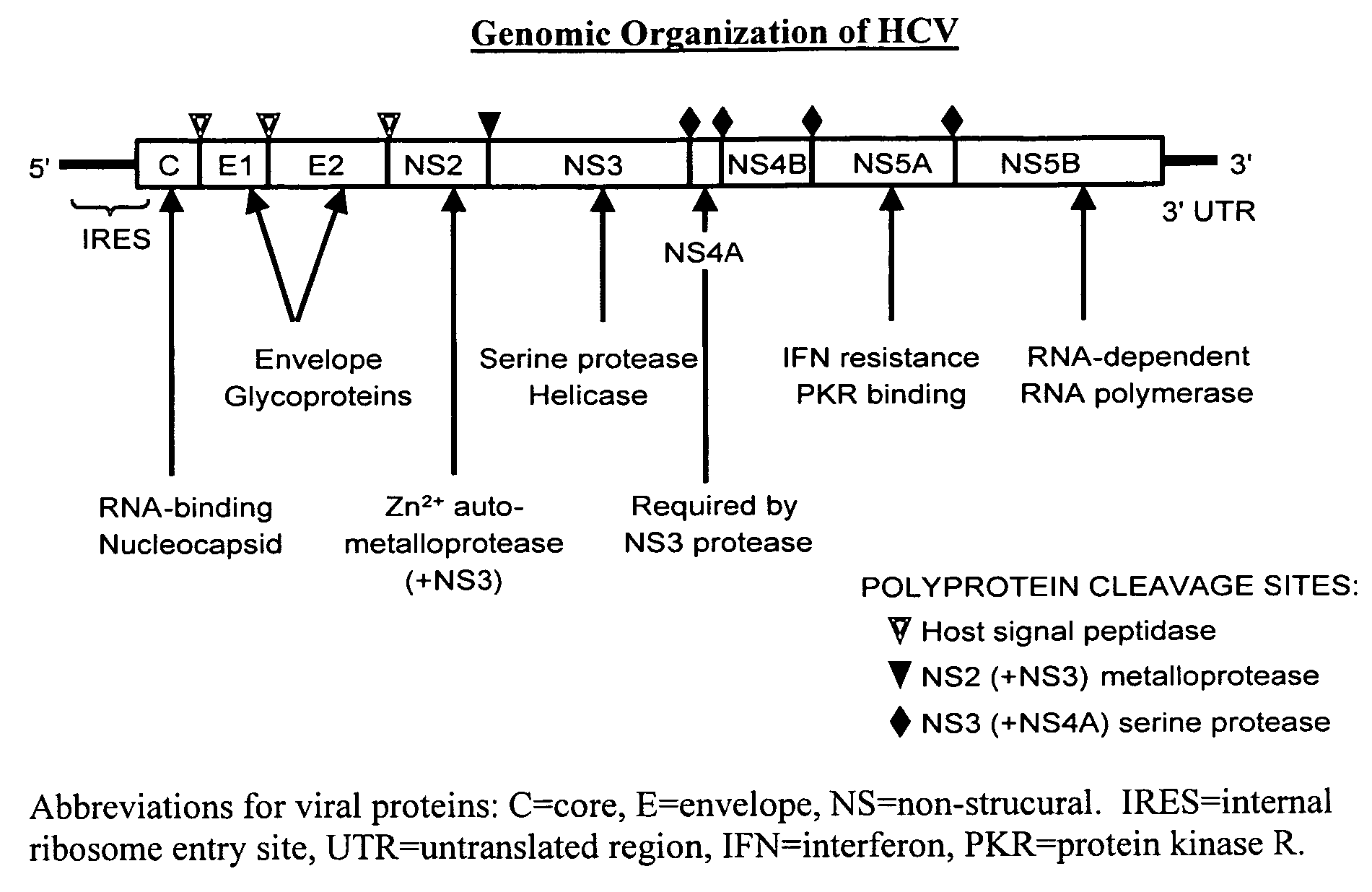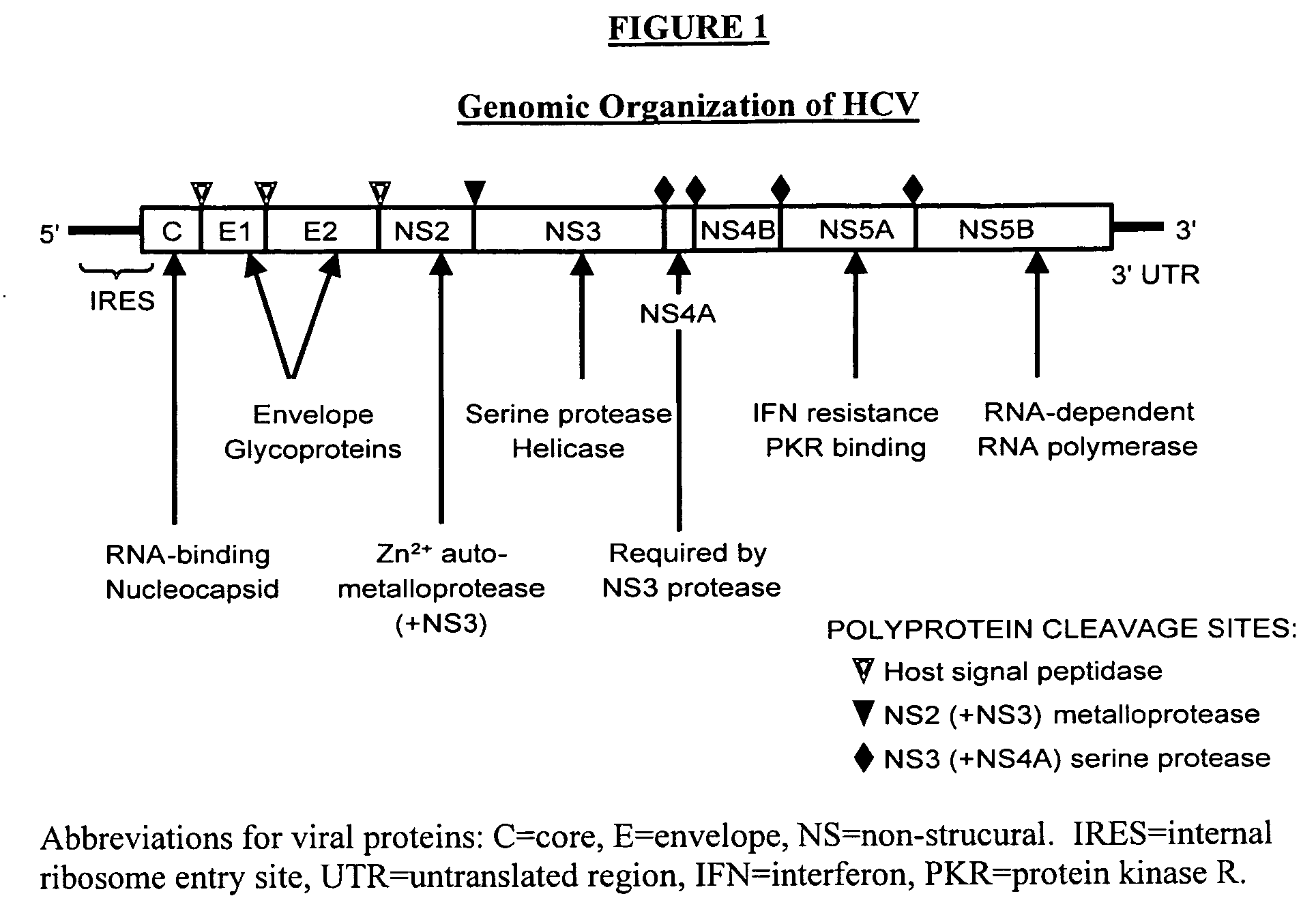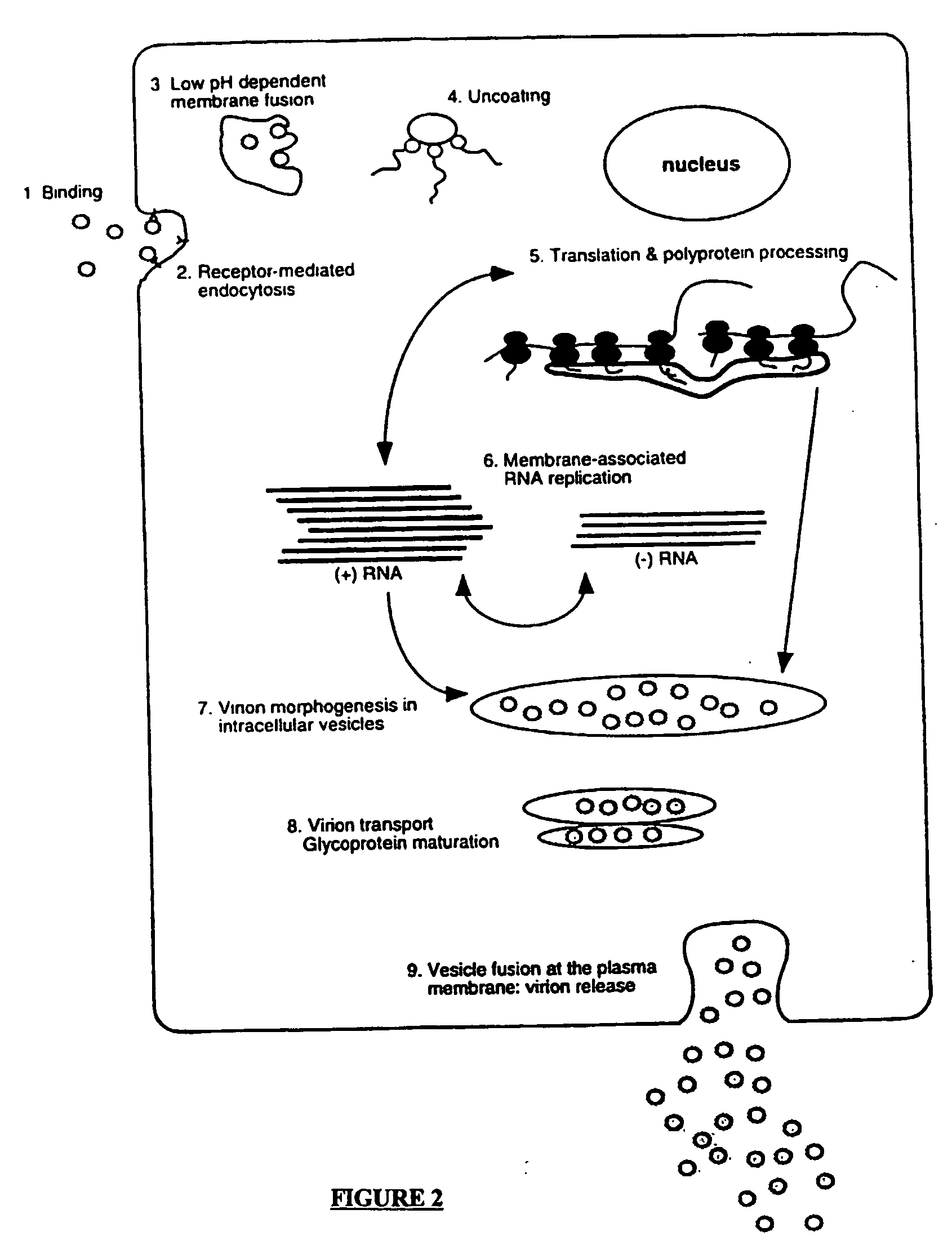Compositions and methods for determining susceptibility of hepatitis C virus to anti-viral drugs
a technology of antiviral drugs and compositions, applied in the field of methods and compositions for determining the susceptibility of a pathogenic virus to antiviral compounds, can solve the problems of no well established drug susceptibility assays for hcv, substantial drug resistance in pathogenic viruses, etc., and achieve the effects of reducing susceptibility, increasing the activity of indicator genes, and changing the activity of indicators
- Summary
- Abstract
- Description
- Claims
- Application Information
AI Technical Summary
Benefits of technology
Problems solved by technology
Method used
Image
Examples
example 1
6.1 Example 1
Neomycin Replicons
[0284] This example demonstrates that replicons comprising the neomycin resistance-conferring gene are functional.
[0285] The HCV replicon system of FIG. 10 was used. These replicons had a neomycin resistance marker gene, such as the neomycin phosphotransferase gene (neo) in place of the sequences coding for the structural (C, E1, E2) proteins. Additionally, these replicons had the IRES from encephalomyocarditis virus (EMCV) inserted into the replicon to drive the translation of the HCV NS proteins.
[0286] Replication was demonstrated by the generation of cells that grew selectively in the presence of neomycin (G418) (Lohmann et al., 1999, Science 285:110-113). Individual replicons comprised the NS5B R2884G (“Adapt5B”) adaptive mutation (see Lohmann et al., 2001, J Virol 75:1437-1449), or a combination of the NS3 E1202G, T12801, and NS5A S2179P (“Adapt5.1”) adaptive mutations (see Krieger et al., 2001, J Virol 75:4614-4624), or an NS5B polymerase inac...
example 2
6.2 Example 2
Luciferase Replicons
[0288] This example demonstrates that replicons comprising the luciferase indicator gene are functional.
[0289] An HCV replicon system comprising a firefly luciferase reporter gene in addition to the Adapt5B, Adapt5.1 (see FIG. 12 and Example 9, above) adaptive mutations, or the NS5B polymerase inactivating mutation (“GND”) was used. Huh-7 cells were electroporated with 10 μg of RNA plus 17 μg carrier tRNA and transferred into 10 mls of complete medium, and 2 ml of the cells were seeded in 6-well culture plate. At 4, 24, and 48 hours after transfection, cells were washed with PBS and lysed in 350 μl lysis buffer (50 mM Tris phosphate, pH 7.8, 2 mM CDTA, 2 mM DTT, 10% glycerol, 1% Triton X-100). 150 μl of the cell lysate was mixed with 150 μl of luciferase substrate (20 mM TrisHCl, 3.74 mM MgSO4, 0.1 mM EDTA, 33.3 mM DTT, 0.2 g / l CoenzymeA, 0.4 g / l ATP, 50 mg / l luciferin) in duplicate wells of an opaque 96-well plate, mixed well, and read in a lumino...
PUM
| Property | Measurement | Unit |
|---|---|---|
| temperatures | aaaaa | aaaaa |
| volumes | aaaaa | aaaaa |
| concentration | aaaaa | aaaaa |
Abstract
Description
Claims
Application Information
 Login to View More
Login to View More - R&D
- Intellectual Property
- Life Sciences
- Materials
- Tech Scout
- Unparalleled Data Quality
- Higher Quality Content
- 60% Fewer Hallucinations
Browse by: Latest US Patents, China's latest patents, Technical Efficacy Thesaurus, Application Domain, Technology Topic, Popular Technical Reports.
© 2025 PatSnap. All rights reserved.Legal|Privacy policy|Modern Slavery Act Transparency Statement|Sitemap|About US| Contact US: help@patsnap.com



